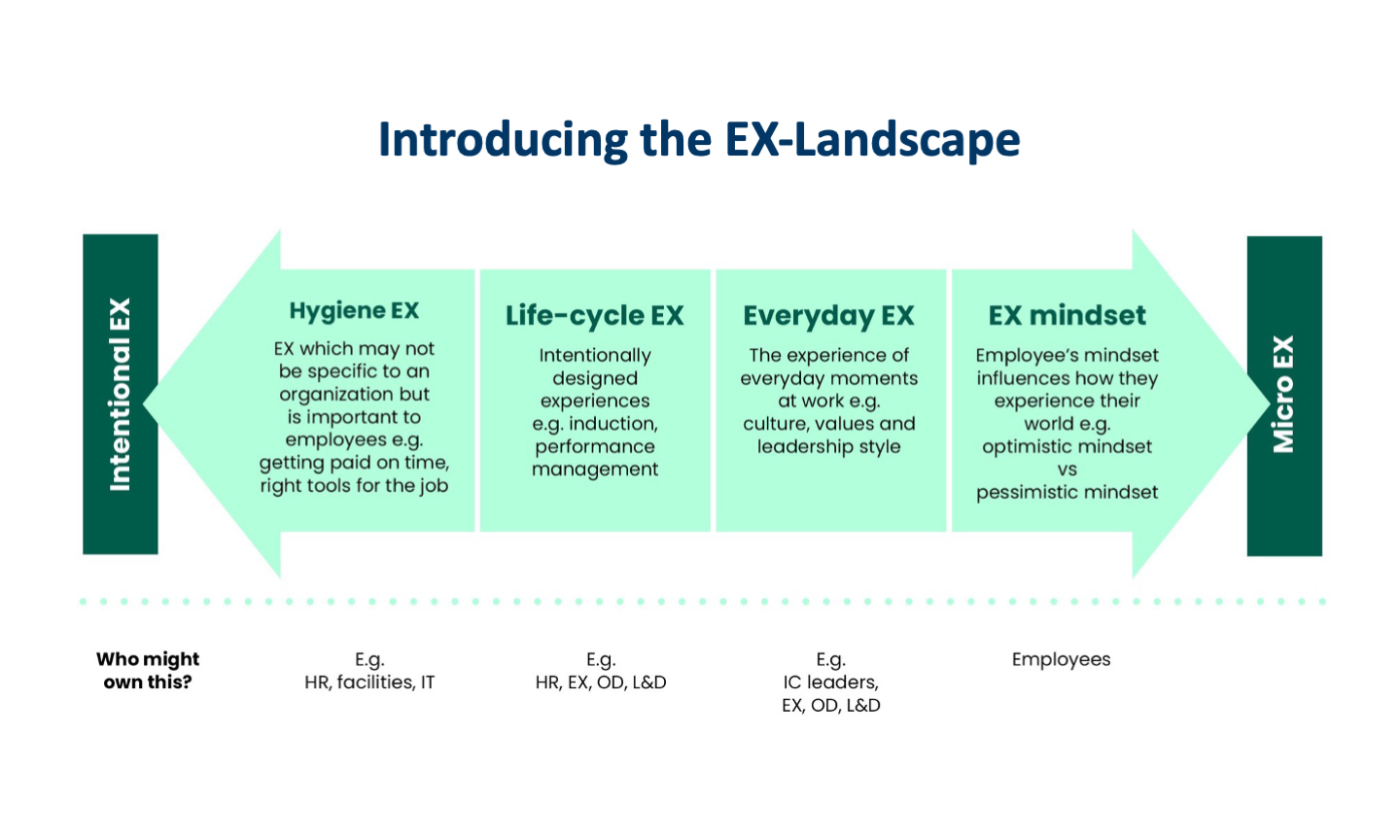Key insights from the Gallup’s 2024 State of the Global Workplace Report

Emma Bridger
Minutes
19 June 2024
Employee Engagement
Employee Experience
Measurement
Benchmarking
Employee Experience
Measurement
Benchmarking
The "State of the Global Workplace 2024" report by Gallup offers a detailed look at employee experiences around the world. It covers crucial topics like mental health, economic influences, and the role of managers in improving workplace experience and ultimately performance.
Here, we'll break down the key findings from this
report and suggest practical steps to enhance employee engagement and
wellbeing.
The impact of employee engagement:Significant actor in life
satisfaction: Employee engagement is a
critical determinant of overall life satisfaction. Engaged employees report
higher levels of daily enjoyment and lower levels of negative emotions such as
stress, anger, and loneliness.
Comparison with
unemployment: The
negative impacts of being actively disengaged at work are comparable to,
or worse than, being unemployed, emphasising the importance of fostering
engagement to improve mental health.
The findings add further weight to the business case for employee experience and engagement. As we move away from work-life balance to work-life integration, it becomes ever more critical to focus on improving EX and employee engagement given the halo effect this has on our overall lives.
The findings add further weight to the business case for employee experience and engagement. As we move away from work-life balance to work-life integration, it becomes ever more critical to focus on improving EX and employee engagement given the halo effect this has on our overall lives.
Hope for the future:
However, employee engagement significantly correlates with optimism about the future, regardless of the level of labour protections in a country. This underscores the role of elements such as meaningful work, supportive leaders and more in fostering a positive outlook among employees.
This finding illustrates the need to take a holistic approach to EX in order to improve engagement. It is not enough to focus on one area in isolation. Our EX Landscape model provides a simple visual which brings this to life:
However, employee engagement significantly correlates with optimism about the future, regardless of the level of labour protections in a country. This underscores the role of elements such as meaningful work, supportive leaders and more in fostering a positive outlook among employees.
This finding illustrates the need to take a holistic approach to EX in order to improve engagement. It is not enough to focus on one area in isolation. Our EX Landscape model provides a simple visual which brings this to life:

The Crucial
Role of Managers
Impact on engagement: Managers account for 70% of the variance in team engagement. Engaged managers are crucial for fostering an engaged workforce, highlighting the need for effective managerial practices.
Negative experiences of managers: Despite their pivotal role, managers often experience higher levels of stress and negative emotions than non-managers. This suggests that supporting managers is essential for overall organisational health.
High-engagement organisations: Leading organisations achieve high levels of engagement by prioritising manager development and integrating engagement into all stages of the employee lifecycle. These organisations see significant improvements in productivity, profitability, and employee wellbeing.
This finding won’t come as surprise, the link between managers and subsequent EX and engagement has long been established. Starting with your leaders and managers makes sense when looking to improve EX and engagement.
Impact on engagement: Managers account for 70% of the variance in team engagement. Engaged managers are crucial for fostering an engaged workforce, highlighting the need for effective managerial practices.
Negative experiences of managers: Despite their pivotal role, managers often experience higher levels of stress and negative emotions than non-managers. This suggests that supporting managers is essential for overall organisational health.
High-engagement organisations: Leading organisations achieve high levels of engagement by prioritising manager development and integrating engagement into all stages of the employee lifecycle. These organisations see significant improvements in productivity, profitability, and employee wellbeing.
This finding won’t come as surprise, the link between managers and subsequent EX and engagement has long been established. Starting with your leaders and managers makes sense when looking to improve EX and engagement.
Organisational Success:
Best-Practice Examples: Organisations that successfully foster high engagement levels demonstrate the positive impact of focusing on employee needs and building strong, supportive cultures. These companies often see lower turnover, higher productivity, and greater overall success.
And finally the report adds further evidence to the business case for improving EX and engagement, demonstrating clearly that companies with high engagement outperform on a range of business outcomes.
Best-Practice Examples: Organisations that successfully foster high engagement levels demonstrate the positive impact of focusing on employee needs and building strong, supportive cultures. These companies often see lower turnover, higher productivity, and greater overall success.
And finally the report adds further evidence to the business case for improving EX and engagement, demonstrating clearly that companies with high engagement outperform on a range of business outcomes.
What next?
The "State of the Global Workplace 2024" report underscores the importance of addressing mental health, well-being, economic conditions, and leadership practices to improve employee experience, engagement and organisational performance. As stated some of these areas are directly within our gift to control and influence as practitioners.
So where do we go from here? There are some clear actions areas that should be prioritised, and we have a range of resources and tools on The EX Space which can help:
By addressing these critical areas, organisations can create healthier workplaces that support the wellbeing of their employees and contribute to a better experience for all.
As a member of the EX Space you can access a range of resources to support the recommendations we have outlined above:
Free blogs or tools for Essentials Members:
Best EX tool - this tool will enable you to discover what really makes a great experience for your people, providing actionable insights
The EX Landscape – this resource provides further detail on this model and how to use it to take a more holistic approach to EX and engagement
Unlocking the power of ‘how might we questions’ – this is a great tool to help you explore ways in which you can modernise your policies to support EX and engagement
Tools for Pro-members
The line managers toolkit - this comprehensive toolkit gives you everything you need to support you leaders and managers to facilitate a great EX which unlocks engagement
Setting your line managers up for success bitesize training – this short course guides you through the approach and tools to upskill your line managers to help them create great experiences and deliver engagement
The "State of the Global Workplace 2024" report underscores the importance of addressing mental health, well-being, economic conditions, and leadership practices to improve employee experience, engagement and organisational performance. As stated some of these areas are directly within our gift to control and influence as practitioners.
So where do we go from here? There are some clear actions areas that should be prioritised, and we have a range of resources and tools on The EX Space which can help:
- Focus on your leaders and managers: Invest in their development to enhance their ability to support and engage their teams.
- Modernise policies linked to ‘labour protections’: Revisit and re-design policies linked to ‘labour protections’ and ensure they are working for you not against you
- Focus on the root causes of mental ill health: take time to understand the cause of stress and negative impacts on wellbeing and avoid taking the ‘sticking-plaster’ approach by rolling out interventions which treat the symptom rather than the cause.
- Fostering engagement: Prioritise employee engagement by taking time to understand what really matters to your people rather than making assumptions about what good looks like.
By addressing these critical areas, organisations can create healthier workplaces that support the wellbeing of their employees and contribute to a better experience for all.
As a member of the EX Space you can access a range of resources to support the recommendations we have outlined above:
Free blogs or tools for Essentials Members:
Best EX tool - this tool will enable you to discover what really makes a great experience for your people, providing actionable insights
The EX Landscape – this resource provides further detail on this model and how to use it to take a more holistic approach to EX and engagement
Unlocking the power of ‘how might we questions’ – this is a great tool to help you explore ways in which you can modernise your policies to support EX and engagement
Tools for Pro-members
The line managers toolkit - this comprehensive toolkit gives you everything you need to support you leaders and managers to facilitate a great EX which unlocks engagement
Setting your line managers up for success bitesize training – this short course guides you through the approach and tools to upskill your line managers to help them create great experiences and deliver engagement
What next?
The "State of the Global Workplace 2024" report underscores the importance of addressing mental health, well-being, economic conditions, and leadership practices to improve employee experience, engagement and organisational performance. As stated some of these areas are directly within our gift to control and influence as practitioners.
So where do we go from here? There are some clear actions areas that should be prioritised, and we have a range of resources and tools on The EX Space which can help:
By addressing these critical areas, organisations can create healthier workplaces that support the wellbeing of their employees and contribute to a better experience for all.
By becoming a member of the EX Space you can access a range of resources to support the recommendations we have outlined above including...
For our Essentials Members...
For our Pro members...
Find out more about how to become a member, or sign up now here
The "State of the Global Workplace 2024" report underscores the importance of addressing mental health, well-being, economic conditions, and leadership practices to improve employee experience, engagement and organisational performance. As stated some of these areas are directly within our gift to control and influence as practitioners.
So where do we go from here? There are some clear actions areas that should be prioritised, and we have a range of resources and tools on The EX Space which can help:
- Focus on your leaders and managers: Invest in their development to enhance their ability to support and engage their teams.
- Modernise policies linked to ‘labour protections’: Revisit and re-design policies linked to ‘labour protections’ and ensure they are working for you not against you
- Focus on the root causes of mental ill health: take time to understand the cause of stress and negative impacts on wellbeing and avoid taking the ‘sticking-plaster’ approach by rolling out interventions which treat the symptom rather than the cause.
- Fostering engagement: Prioritise employee engagement by taking time to understand what really matters to your people rather than making assumptions about what good looks like.
By addressing these critical areas, organisations can create healthier workplaces that support the wellbeing of their employees and contribute to a better experience for all.
By becoming a member of the EX Space you can access a range of resources to support the recommendations we have outlined above including...
For our Essentials Members...
- Best EX tool - this tool will enable you to discover what really makes a great experience for your people, providing actionable insights
- The EX Landscape – this resource provides further detail on this model and how to use it to take a more holistic approach to EX and engagement -
- Unlocking the power of ‘how might we questions’ – this is a great tool to help you explore ways in which you can modernise your policies to support EX and engagement
For our Pro members...
- The line managers toolkit - this comprehensive toolkit gives you everything you need to support you leaders and managers to facilitate a great EX which unlocks engagement
- Setting your line managers up for success bitesize training – this short course guides you through the approach and tools to upskill your line managers to help them create great experiences and deliver engagement
Find out more about how to become a member, or sign up now here

